We at Cambridge Common Writers love to celebrate the diversity of our community, which is why we’re thrilled to be continuing our Spotlight series for Pride Month! Come and get to know some of our LGBTIQA+ alums as we ask them about their writing lives and the many wonderful projects they’re working on.
SARA LEVINE — WFYP, JANUARY 2006
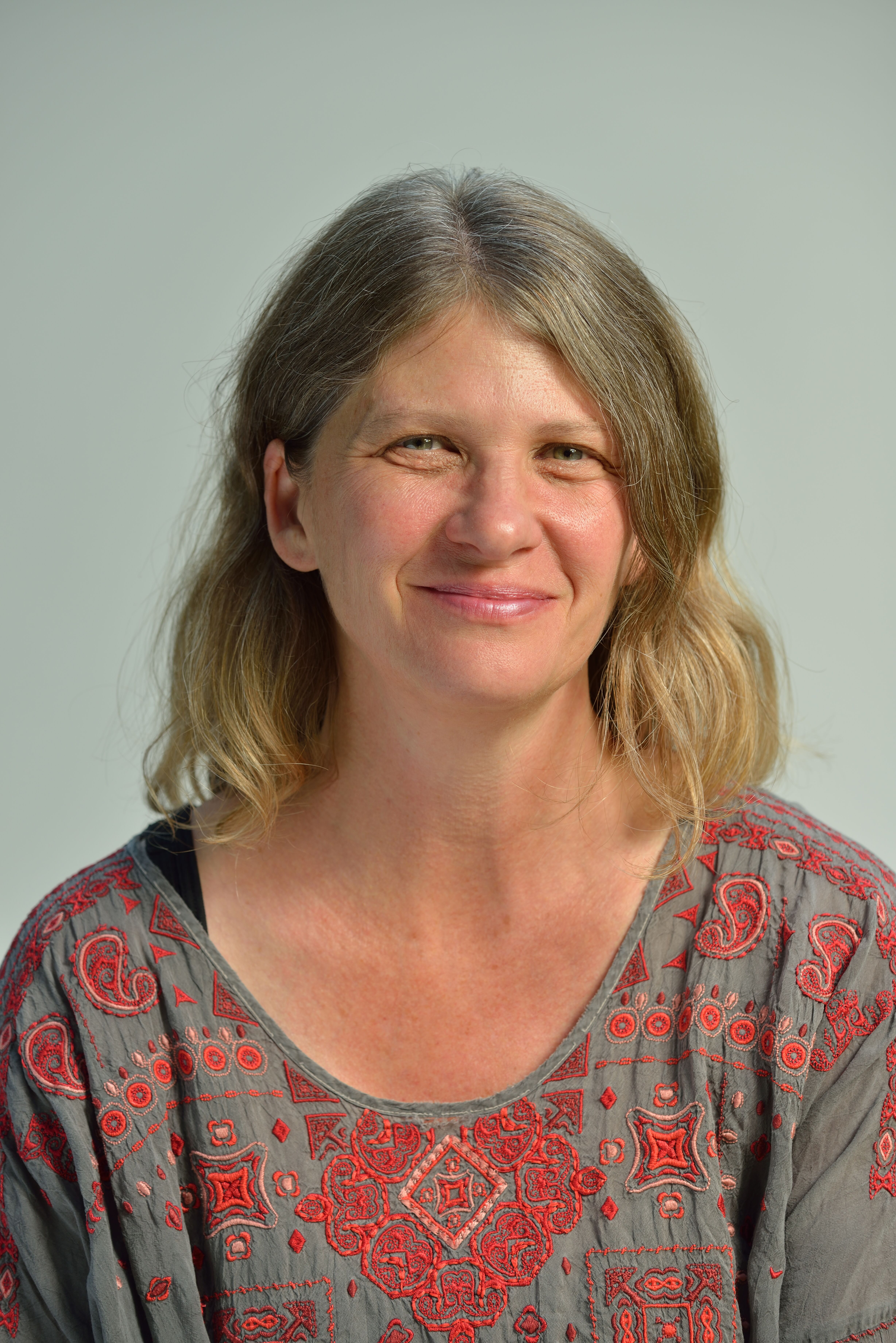
Sara Levine is an educator, veterinarian and award-winning writer of STEM books for kids. Her picture books which include Bone by Bone, Tooth by Tooth, Flower Talk, and The Animals Would Not Sleep! have received theAAAS/Subaru SB&F Prize, the Beehive Book Award, the Cook Prize Honor and the Mathical Book Prize. Her writing for adults has appeared in the Massachusetts Review, Bayou, The Gay and Lesbian Review, and The Boston Globe.
Why do you write and what do you like to write about the most?
I write because when it’s going well, there’s hardly anything I’d rather be doing. Of course, it’s not always going well. But I strive for that feeling. I also write to find out what I think. Sometimes the act of putting words down makes connections for me that I’m not consciously aware of. And more recently, I’d say I also write for the joy of sharing my work with others, especially sharing my ideas about science and teaching children in engaging ways.
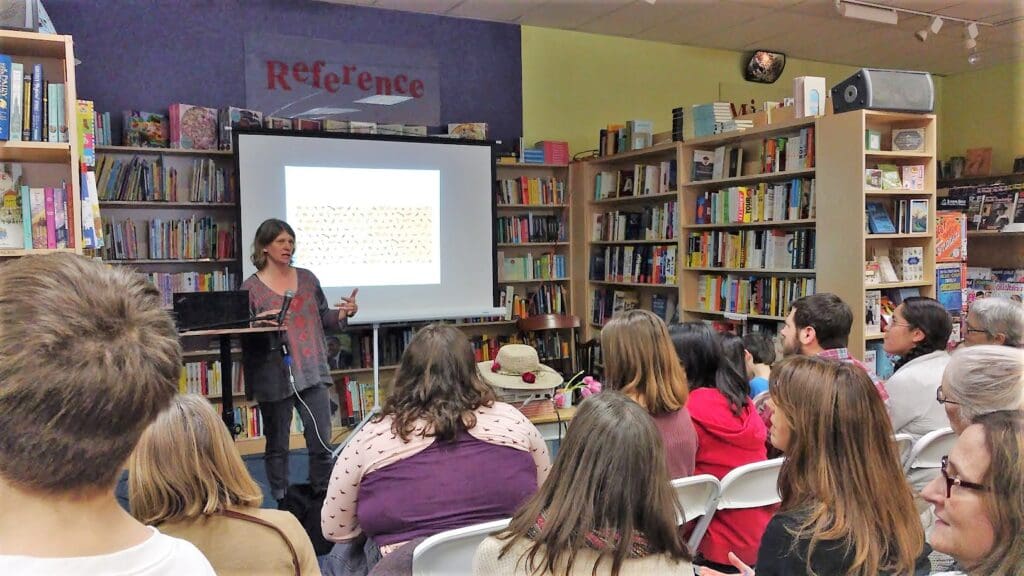
What or who were some of your earliest inspirations?
My teachers. In first grade we learned all of the steps to make our own books—sewing the pages together, choosing a cover fabric, gluing it to a cardboard cover and binding the parts together—the whole thing. My cover fabric was blue and a bit shag-carpeting looking, and one of my teachers was always teasing me that he was going to vacuum my book off for me at the end of the day. The other one let me pick out an adorable (animal, in my case) sticker to add to each page and was very interested in the stories I wanted to tell. Writing in this class was highly special and valued, and this idea stuck.
What are some writing strategies that work well for you?
When I was working full time, I had Friday afternoons off. I’d meet with a friend at her house each week, have lunch with her and then we’d go into separate rooms to write for two hours. This worked very well—the company, the lack of anything too distracting to do at her place, the routine of it. When I lost my job, I was able to expand this strategy. In the morning, after my daughter left for school, I’d bike to a café and get a coffee and chocolate croissant and sit at a long communal table where I’d write until lunch. It turned out there were other writers there too—some of whom I connected with. And other friends then ended up joining on certain days. Having the community and the positive reinforcement (I only got my coffee there) and routine worked well for me. I also made myself take the weekends off from writing, which made me eager to get back to it on Mondays. During Covid, this all changed of course. I was forced to buy a French press, for example. But I think the habits I built up kept me writing pretty regularly.
For you, what were some valuable parts of the Lesley MFA program that helped shape your writing career?
The people. Alex Johnson taught me so much about writing creative nonfiction and about myself. About how to trust my unconscious and that metaphors and symbols echo and bounce off each other in ways I didn’t previously understand. David Elliot taught me to analyze children’s books and how to write humor. Susan Goodman taught me how to write nonfiction for children. And then how to take it to the next step. And then the next step. I’m very grateful for her patience and mentoring of me. And my friends I made while in the program—especially those who have remained close and became a part of my writing and critiquing community after graduation.
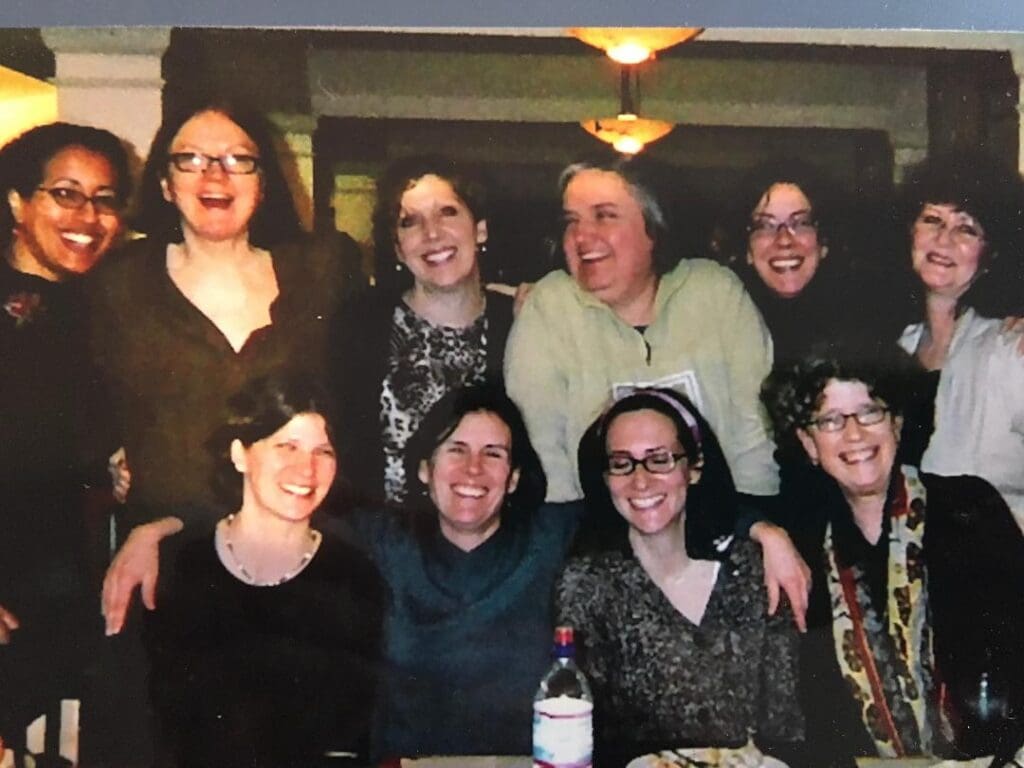
Bottom Row L to R: Sara Levine, Maureen Cornell, Amy Yelin, Elizabeth Seamans
Top Row L to R: Amanda Dye (now Amanda Bauch), Mary Lou Shields, Cherly Caruolo, Cassandra Goldwater, Janet Pocorobba, Rosemarie Harmon
What are some things about writing or publishing you’ve learned since graduation that you think others should know?
- Join SCBWI. This professional organization has workshops and support groups and opportunities to meet editors and agents and other children’s literature professionals. I’ve found it very helpful.
- You need a critique group of people who can give good feedback and also care about you as a person.
- Structure is really important. Writing beautifully crafted sentences or scenes isn’t enough. It won’t work unless you hang it on a good structure. I learned this late in the game, I think, from my friend Toni Buzzeo. But there are also very good books out about this too.
What do you like to read? What are some books you’ve read lately that you’ve really enjoyed?
I read all sorts of things—fiction and nonfiction, memoir, picture books, young adult, middle-grade, poetry. Some outstanding books I’ve read recently: Good Talk by Mira Jacob (graphic memoir); When Stars Are Scattered, by Victoria Jamieson and Omar Mohamed (YA, graphic novel); Red, White, and Whole by Rajani LaRocca (MG, fiction in verse); Klara and the Sun by Kazuo Ishiguro (fiction); I Saw Ramallah by Mourid Barghouti (memoir); Aristotle and Dante Discover the Secrets of the Universe by Benjamin Alire Saenz (YA, fiction); Lillian Boxfish Takes a Walk by Kathleen Rooney (fiction); Smithsonian Star Finder: Step by Step Guide to the Night Sky (nonfiction); and too many picture books to list.

Tell us a fun fact about yourself that doesn’t have to do with writing.
I can make excellent bird sounds.
What are you working on now?
I’m fairly prolific and always have projects at various stages of development. Some will never become books, of course. It’s useful for me to think about writing books like planting seeds—only some will ever sprout. This week, I’m working on a picture book called A Terrible Place for a Nest which is a fictional picture book including some mourning dove science about the loss of a home—something my daughter and I experienced. I’m also starting a nonfiction book about how animals vote.
I have a number of books at a finished stage with my agent, Ammi-Joan Paquette, right now. She’s shopping some of them around. Of these books, there are a few that I’d particularly like to see published. One is Not Just Male or Female: Variation in the Animal Kingdom. I think children’s literature can play a big role in helping kids understand human diversity and themselves, and this book is something I can contribute to that end. The Story of Carbon: An Interactive Graphic Novel is based on how I used to teach this topic to college students. The book highlights a unique way of understanding and teaching the relationship between carbon and climate change, and my hope is that it will make the science more interesting and accessible to people. And Waiting: On Discovering Eggs and Egg Cases in Nature is a poetic, ethics-based and science-focused picture book on the value of waiting for things to unfold. It’s not going to change the world, but it’s one close to my heart.
I have four books that are coming out in the next two years which are in various stages. A Peak at Beaks: Tools Birds Use will be out this September.

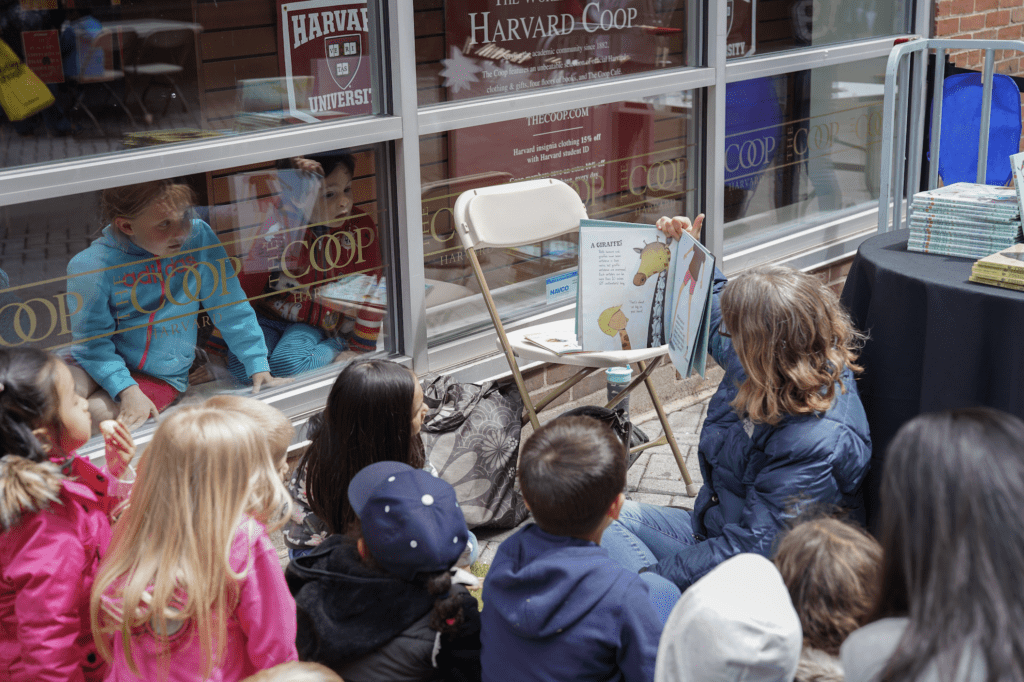
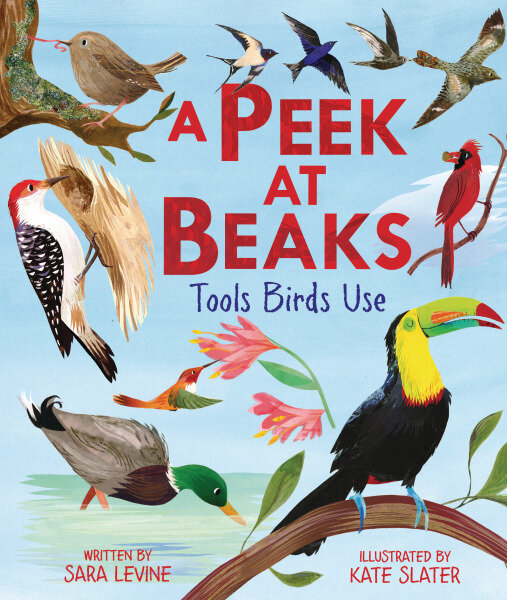
Comments are closed